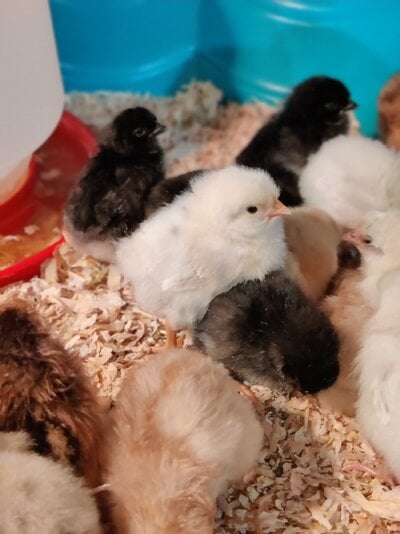Farmhouse Hen
In the Brooder
- Feb 7, 2024
- 2
- 17
- 29
Here's the answer to breeding a White Leghorn hen to a Lavender Orpington rooster. The result is some darling chicks! They are very light in color, almost pure white and have black spots on their heads and bodies. I'm strongly tempted to call them domino chicks. They are very friendly and are the first ones to eat out of my hand every time. I wanted to try that cross because the Leghorns are our best layers as far as consistency and egg size and Roosteroo, the Orpington is well tempered and an exceptional flock protector.
I'm assuming their eggs will be brown. Since the Leghorns aren't known for being broody, we'll have to see if the Orpington tendency for that comes through to this generation.
I'm assuming their eggs will be brown. Since the Leghorns aren't known for being broody, we'll have to see if the Orpington tendency for that comes through to this generation.



